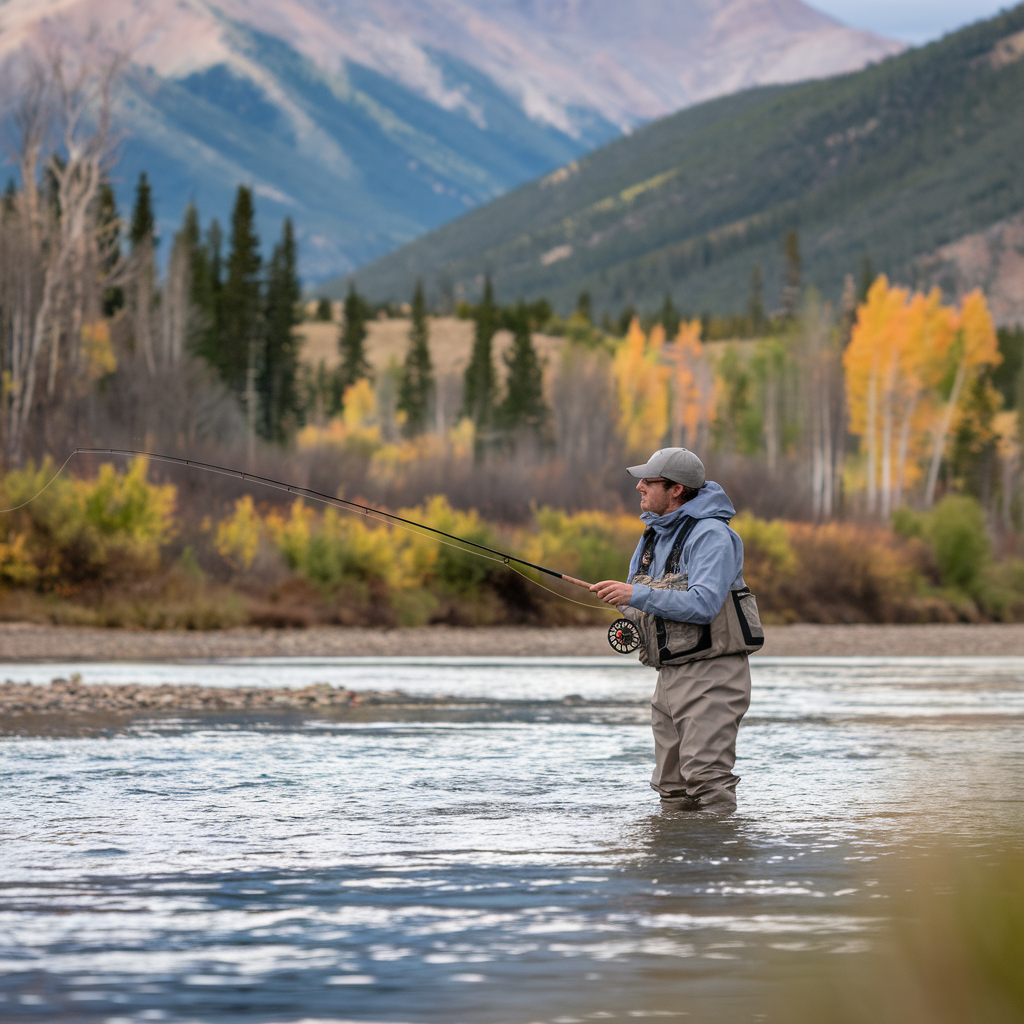If you're a fly fishing enthusiast, choosing the suitable fly tippet material can be crucial to your success. With so many options available in the market, it can be overwhelming to determine which one to use. However, understanding the differences between various fly tippet materials such as nylon, fluorocarbon, and monofilament can help you make an informed decision. So, let's delve into the characteristics of each material and explore how they can impact your fly fishing experience.
The Importance of Fly Tippet in Fly Fishing
Fly fishing is a popular recreational activity that requires a specific setup to ensure a successful catch. The fly tippet is a crucial element in this setup, connecting the fly to the leader and playing a significant role in presenting the fly to the fish. It is the thinnest and most delicate part of the fly fishing setup, and its primary purpose is to provide a seamless and natural presentation of the fly to the fish.
When it comes to fly fishing, the tippet material is of the utmost importance as it acts as a barrier between the fish and the fly. It helps to ensure that the fish does not detect any unnatural elements and increases the chances of a successful catch. The right tippet material can make all the difference in fly fishing, directly impacting your chances of landing your desired catch.
Apart from its primary purpose, the tippet also acts as a shock absorber, which helps to absorb the energy of a sudden strike or aggressive fish movements. It protects the leader and the main fly line from breaking under pressure, thereby increasing the overall durability of your fishing setup.
It is essential to choose the right tippet material for fly fishing, depending on the type of fish and the conditions of the water. The thickness and strength of the tippet material should be chosen accordingly to match the fly size and the fish species you are targeting. Proper maintenance by replacing it frequently is also recommended to ensure its durability.
Different Types of Fly Tippet Materials
Several types of fly tippet materials are available, each with its own strengths and weaknesses. The most common materials include monofilament, fluorocarbon, and braided tippet.
- Monofilament tippet is a popular choice due to its versatility and affordability. It offers good knot strength and is relatively easy to handle. However, it may not be as strong as other materials and can be more visible in the water.
- Fluorocarbon tippet is known for its excellent invisibility in the water, making it a great choice for clear and spooky fish. It also has superior abrasion resistance and is more durable compared to monofilament. However, fluorocarbon tippet can be more expensive.
- Braided tippet is a strong and durable option that provides excellent knot strength. It is less visible in the water than monofilament and offers good abrasion resistance. However, it can be more difficult to handle and may require additional tools for proper knot tying.
When choosing the suitable fly tippet material, consider the fishing conditions, target species, and personal preferences. It is important to experiment with different materials to find the one that suits your fishing style and maximizes your chances of success.
-1.png?width=1920&height=1080&name=Untitled%20design%20(48)-1.png)
Factors to Consider When Choosing Fly Tippet Material
- Fishing Conditions: The clarity and depth of the water, as well as the weather conditions, can affect the visibility of the tippet. Choose a material that matches the water conditions to increase your chances of fooling the fish.
- Target Species: Different fish species have varying sensitivities to tippet visibility. Research the behavior and preferences of your target species to select a tippet material that will not spook the fish.
- Fly Size: The size and weight of the fly determine the strength and thickness of the tippet needed. Smaller flies require lighter tippets, while larger flies may require heavier tippets to handle the extra weight.
- Knot Strength: Consider the knot strength of the tippet material to ensure secure connections between the fly, tippet, and leader. Weak knots can result in lost fish.
- Durability: Assess the durability of the tippet material, especially if you are targeting aggressive fish or fishing in areas with rocks or debris. A stronger and more abrasion-resistant material will increase the longevity of your setup.
Tips for Using Fly Tippet Effectively
Properly Attach the Tippet: Use appropriate knots to ensure a secure and reliable connection between the tippet and the leader. Popular knots for attaching tippets include the improved clinch knot and the double surgeon's knot.
- Gradual Tapering: Gradually taper the tippet from the leader to the fly to provide a smooth and natural transition. This will improve the fly's presentation and increase the chances of fooling the fish.
- Regularly Inspect and Replace: Check your tippet for signs of wear or damage regularly. Replace it if it shows any signs of weakening or fraying. A strong and intact tippet is essential for successful fly fishing.
- Adjust Tippet Length: Experiment with different tippet lengths to find the optimal setup for your fishing conditions and target species. Consider water depth and fish behavior when determining the appropriate tippet length.
- Practice Proper Knot Tying: Ensure you are proficient in tying the necessary knots for attaching tippets. Practice tying knots before heading out on the water to avoid frustrations or lost opportunities.
-1.png?width=1920&height=1080&name=Untitled%20design%20(39)-1.png)
Pro Tip
Hooking the perfect catch starts with picking the right fly tippet material—think of it as matchmaking for fishing gear. This slender thread is the unsung hero that connects your fly to the leader, making sure your setup is as irresistible to fish as a five-star buffet.
You've got options galore—monofilament, fluorocarbon, and braided tippet—each with its own quirks. It's like choosing between a Ford, a Ferrari, and a tank. Pick the one that vibes with your fishing conditions and your target fish’s preferences.
When you're on the hunt for the ideal tippet material, keep these golden rules in mind: assess the fishing conditions, consider the fish species you're after, match the fly size, ensure knot strength, and think about durability.
Master the art of using fly tippet effectively. Nail those knots, taper your tippet like a pro, inspect it regularly, and tweak the length as needed. With these tips, you'll be the MacGyver of fly fishing, ready to reel in the big ones with finesse.
Dive into the diverse world of fly tippet materials, mix and match, and savor the thrill and satisfaction of successful fly fishing.
.png?width=300&height=100&name=Copy%20of%20Rise%20Beyond%20Logo%2012.31.24%20(300%20x%20100%20px).png)
.png)

.png)
